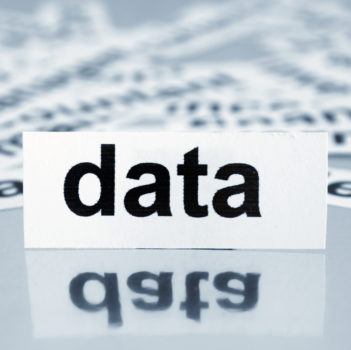What Has Your Data Done for You Lately?
by Sonja Kroll on 29th Mar 2018 in News

Access to information has been revolutionised by the internet; and big data now provides insights on consumers at the touch of a button. However, the demographics that have historically guided our comms planning are becoming increasingly meaningless. Tyler Greer (pictured below), head of strategy, Exponential, discusses how marketers can take advantage of big data to optimise their campaigns, as well as the pitfalls and opportunities of the data-led media environment for brands.
The little planet upon which we live is desperately overcrowded with two things: people and data. Every day we add more to the great pile of each. But people and data have some things in common, both need to be housed, both need security, and both need to be put to meaningful work. How successfully we’re achieving any of these for either is questionable.
People and data have something else in common: one should be able to help us understand the other. People, through insight and analytics, should be able to help us understand data; and that data, in turn, should be able to help us understand people. And, at a point in history in which we are less likely to be clearly defined by our demographic profiles and more by the circumstances in which we find ourselves or the identities we can construct as we see fit, that matters.
The great challenge for marketers today, however, is to get the use of data right.

Tyler Greer, Head of Strategy, Exponential
The gold fever that has surrounded data has been fuelled by the best of intentions; it promises to offer brands a clear picture of their consumers, helping them to understand not just when they are in market, but why. Has this promise been delivered? Well, it seems that depends on who you ask. Millward Brown has been asking marketers for several years about their confidence in their organisation’s ability to successfully use big data. The response is instructive.
In 2017, that confidence stood at 44% amongst advertisers. Astonishingly, that’s only a couple of points higher than the 41% recorded in the same story in 2014. Considering the world’s ability to collect and collate huge slabs of data from evermore diverse sources in ever-faster time, along with the investment in the tools to hold and organise it, this is a worry.
What’s going on here? A few things at once, probably. The first is a volume versus value equation, in which the scale of supply is making it increasingly difficult to sort the good from the bad. Think about London’s current apartment building boom, which is fostering an oversupply of goods supported by unfettered construction, and you’ll start to get a picture of the current data market.
Much of this is about pursuing the aforementioned promise data offers; and it is driving marketers and brands to invest and collect even greater quantities of the stuff without the technology or human expertise to verify its value and make it useable. A study by Fit for Commerce from 2016 found that, whilst over a third of those questioned suggested that they had plenty of data about their market, they still lacked the knowledge or technology to act upon it.
A recent Experian study offers even more damning numbers, with 76% of those questioned believing that inaccurate data is undermining their ability to provide excellent customer service, with 94% of companies – yes, 94% – experiencing internal challenges with data quality.
Transparency is another issue facing marketers; and the opaque environment the ad-tech revolution has helped usher in has frequently acted to undermine the critical trust equation that must exist between agency, brand, and the media. The dreaded 'blackbox', or the stack through which digital and other media is increasingly planned, bought, optimised, and reported on, must by necessity draw together disparate members of the supply chain. Questions over tech and media aside must be explored, of course, but it is the media that underpins the assumptions about audience that should be subject to the greatest scrutiny.
Why? Because the data we use to establish audience behaviour and likelihood to act must be verified. This means a clear understanding of its origin, method of its collection, and age. Survey data is very different from passively observed online behaviour. Search is different from social. And recency matters because behaviours change as the world around those involved changes.
No wonder it’s so (expletive) hard to understand the consumer journey. Not only are we all spread across a multitude of screens and devices across the day, consuming content from everywhere and everyone, the data we collect to try and understand is frequently of unknown provenance and quality.
When it comes to data, many of us act like teenage lads around girls: it’s all we can talk about, all we can think about, but when we finally get our hands on one we have no idea what to do. But we, too, need to mature. The same Millward Brown review that demonstrated the low confidence of marketers in their company’s ability to do something meaningful with data also placed data at the top of the priority list for those same marketers. In fact, across media, agency, and brand, each agree that using data correctly will have the biggest impact on success.
Indeed, most marketers agree that data is the best tool they have in achieving multiple success measures – from user experience to customer relations, media planning and creative, and more. According to Experian, organisations believe they could, on average, increase overall sales by 29%, if data was fully accurate and to the highest quality.
The fact that data is seen as the highest of priorities should not be surprising. Data is fascinating, not because of the myriad collection points we have created. Rather, at its best, it helps us to better understand people. And for brands seeking competitive advantage, that matters.
We find ourselves players in a great Greek drama, in which the very thing that can act to make them powerful is tying them in knots and weakening them overall. Our increasing reliance on data is only as beneficial as the intelligence we bring to it. The right people to understand data and the right data to understand people – if we can invest in both, these critical resources, our brands, and their campaigns will perform a lot better.








Follow ExchangeWire